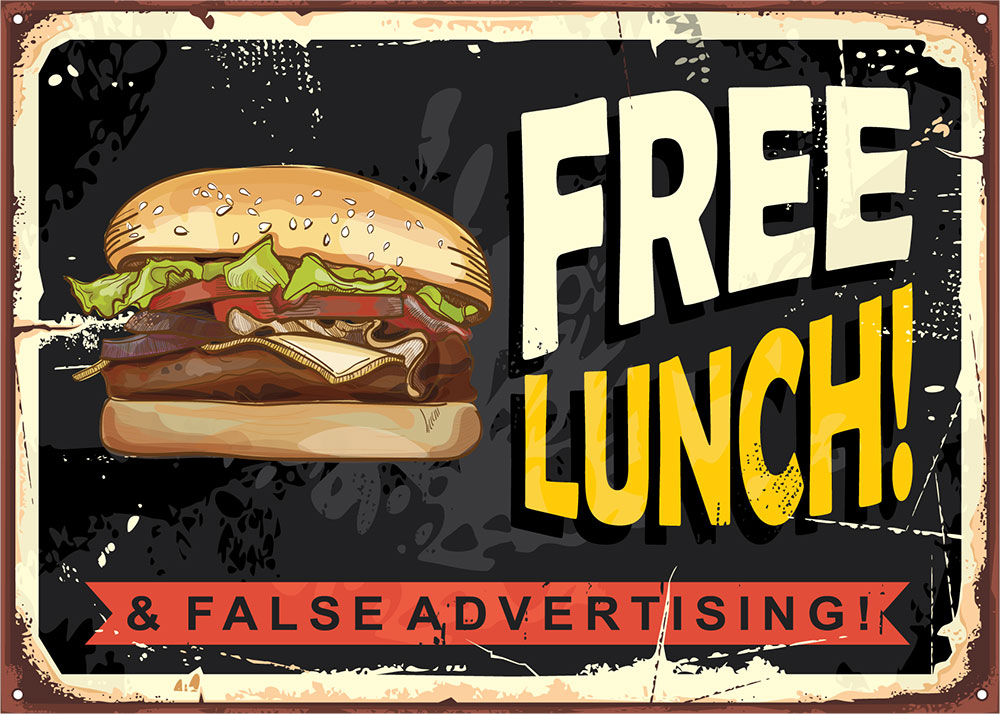
False Advertising
Advertisements cannot be misleading. Here are common examples of false advertising and unfair sales practices.
What is an advertisement?
An advertisement is any information given to you by a seller or manufacturer. This includes ads on TV, radio, the Internet, newspapers and magazines. It also includes anything a salesperson tells you to get you to buy. We like to buy items when they are on sale. Keep in mind that just because an item is on sale, doesn’t mean it’s the lowest price in town. To get the best prices, you need to shop around.
What is false advertisement?
False advertisement is untrue or misleading information given to you to get you to buy something, or to come visit their store. Those who make and sell products must honestly present their products, services and prices to you. Here are common examples of false advertising.
Bait and Switch: Bait and switch is a tactic sellers use to get you to buy an upgrade of the original product on sale. Here’s how it works. A store will advertise a product for a low price with no intention of selling it. When you show up they will tell you how bad the advertised item is, and how the more expensive item is much better. So the store “baits” you with a sale item to get you to go to their store. Then their salespeople “switch” the item by convincing you to get the better model that isn’t on sale.
Sale Items are gone when I get there: Stores are required to have enough of an advertised item in stock to meet a reasonable customer demand. Having just a few of a popular item may indicate the store used the advertisement to get you to come to the store and never intended to honor the sales price. Report stores that are constantly out of sale items.
Stores do not have to issue rain checks. Usually a store will give you a rain check to build good customer relations. However, rain checks can also be a gimmick to get you to visit their store again. Sometimes, you end up visiting the store several times before you can use your rain check.
How many can I buy? Stores cannot limit how many of an advertised item you can buy unless the advertisement clearly states the limit. For example “limited one per customer” is okay as long as it is in the advertisement and not something you find out when you get to the store.
Pictures: If the advertisement contains a picture, it must be a reasonable representation of the item on sale.
Can I Buy Just One? The advertisement must tell you if you have to buy something in package quantities to get the discount. Otherwise you can buy the item individually. For example, a store can’t advertise a pen for $1 and then tell you the sale only applies if you buy the pen in a package of 12 for $12. The advertisement must clearly tell you how many are in the package and the total package cost.
If the store advertises 3 items for $6, and the items are packaged individually, you can buy 1 for $2. You don’t need to buy 3 to get the sale price.
New or Used? The advertisement must tell you if the item is refurbished or used.
Best Price in Town? Just because an item is on sale does not mean you can’t find it cheaper elsewhere. Also, just because an item is advertised doesn’t mean its on sale. For the best price in town, you need to shop around.
Sale Price or Regular Price? To be “on sale” the item must have had a higher former price within the last three months. If an item is always on sale then it’s false advertising.
Which one is on sale? If a store carries similar models, the advertisement must clearly state which one is on sale.
If they say it will do it, it should do it. If the advertisement says a product can do something, it must be able to do it. For example, if a manufacturer advertises that their product can cure cancer, then it must be able to cure cancer. The next time you’re at the grocery store, look in their vitamins section. Most dietary supplements won’t tell you what the product does unless they can find evidence to support it.
Now through Saturday only $1.99: If the regular price is $1.99, then this advertisement while true is misleading and against the law.
Going out of business sale: If a company says they are going out of business, liquidating, or quitting, they must intend to go out of business.
Beware of signs that say, “Going Out For Business.” That’s not the same as going out of business and it’s misleading.
But first you must buy… If you need to buy something to get the sale price on another item, the advertisement must tell you this. Example, if you need to buy a TV for over $1000 to get the VCR for $10, they need to tell you this in the ad.
Assembly required: The outside of the package must indicate if a children’s toy needs to be assembled.
Earth friendly: If a store claims an item is biodegradable, or environmentally friendly, they must provide supporting information upon request.
Lowest Price Guarantee?
Find out if the store refunds the difference if the item goes on sale or is cheaper in the near future. Some stores have a lowest price guarantee policy.
Know a store’s refund policy before you buy
Find out their refund policy on sale items. Some stores offer a full or partial refund, some offer store credit only, and some may offer no refund at all. Save your receipts. You’ll need them for returns or exchanges.
Check your receipts
Check your receipt before you leave the cash register. Make sure you were charged the right price. If an item is on sale, make sure you’re charged the sale price. When an item on sale is scanned, the regular price will be charged if the store has not changed the price in the scanner to the sale price. If you are using coupons, make sure that you get full credit for their value.
If you’ve been overcharged
If you were overcharged, report it to the salesclerk right away. If the salesclerk can’t help you, ask to speak to a manager. By law, you only have to pay the lowest advertised, posted or quoted price offered by the store. Even if the posted price has expired, the store must honor it.
County of Los Angeles Department of Consumer and Business Affairs. Last change: Apr. 14, 2011

